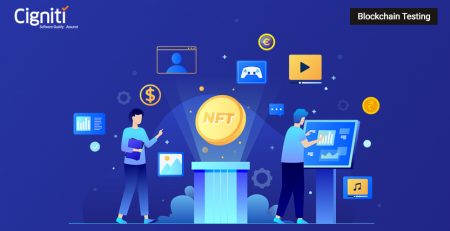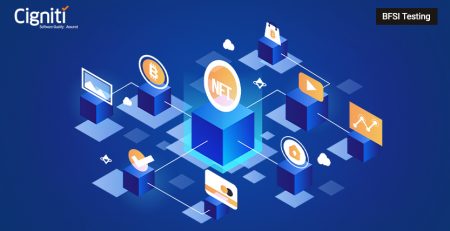Creating Assurance in a Blockchain World
A Blockchain is a distributed ecosystem marked by the absence of a central authority and involves a Distributed Ledger spread across multiple nodes managed by multiple entities. The transactions are recorded using an immutable cryptographic signature known as a hash and added as a chain of “blocks.”
The blockchain market trends
The blockchain technology market is expected to showcase a rapid growth of ~67% over the next four years. The banking and financial services application area is expected to hold the largest market size in the blockchain market during the forecast period.
The top emerging blockchain technology trends are
- Emergence of Blockchain as a service (BaaS)
- Enterprise Blockchain Adoption further accelerated by the Pandemic
- Hybrid blockchain models having a mix of public and private blockchain features
There is phenomenal growth potential in the blockchain space within which Consortium based permissioned Enterprise networks are gaining traction.
A plethora of opportunities in Blockchain
The current market trends open a plethora of opportunities in blockchain. Some of the trends are as follows –
- 90% of European Payments Council members believe that blockchain technology will fundamentally change the industry by 2025.
- Moving securities on blockchains could save $17B to $24B per year in global trade processing costs.
- Blockchain technology for KYC purposes can bring down costs for the banking sector by up to $160M annually.
- A survey among 8 global banks found that blockchain technology could bring down the average cost of clearing and settling SWIFT transactions by $10B annually.
- With approximately 80-90% of world trade relying on trade finance, the influence of blockchain on the market would be felt globally throughout all industries that use cross-border trading.
- Blockchain technology can reduce risk by facilitating information-sharing and cut costs by automating processes, ultimately saving reinsurers up to $10B per annum.
Source: cbinsights.com publication
The driving factors for these numerous opportunities are the inherent benefits that the Blockchain technology promises to bring.
How is it beneficial to customers?
The following are the benefits that blockchain technology brings to its customers:
Immutability – Any validated records are irreversible and cannot be changed. The ledger is designed to be appended only.
Distributed – All network participants have a copy of the ledger for complete transparency. No party can add or remove data maliciously, as that would make his/her ledger inconsistent with others.
Time Stamped – A transaction time stamp is recorded on the block for each entry that is made. This feature makes it an audit-friendly technology.
Unanimous – All network participants agree on the validity or invalidity of the records on the ledger. Consensus protocols are programmed on the network to ensure agreement between the parties.
Anonymous – The identities of the parties are either anonymous or pseudonymous depending on whether it’s a public or a private blockchain network
Programmable – A blockchain employs smart contracts, which are pieces of code with if-then functions sitting on top of the network. These programs ensure that events can be automated without manual intervention.
While the blockchain technology does come with the above significant advantages to its customers, it is imperative to understand the components of Blockchain Assurance.
According to Rajesh Kandaswamy, Blockchain Analyst, Gartner, “New Blockchain testing approaches can be adopted and offered as service propositions as old traditional testing methods might not fit the requirement of an extensive blockchain network. Testing for Blockchain solutions, finding out vulnerabilities, taking quality audits, satisfying business objectives are essential to the success of Blockchain based applications.”
The Blockchain testing approach should be comprehensive to cover the various logical and systemic components of the Blockchain such as Identity & Access, Ledger, Peer/Node, Smart Contract, and integrations across Third Party Interfaces.
Components of a comprehensive Blockchain Testing Assurance program
The major components of the testing program can further be classified into
Functional Testing spread across UI/Mobile app interface, User Acceptance, API Validation, System Integration.
Blockchain centric testing spanning the four central pillars of Immutability, Transparency, Security and Consensus
Non-Functional Testing with the key focus areas as such as Consistency Validation, Fault Tolerance, Database Failover, Resilience, System Performance, Latency, and Synchronization
Security Testing encompassing Identity Theft, Static/Dynamic testing of 3rd party gateways, Network Penetration, and Network Security
A Dashboard depicting the Blockchain Health, Operational Metrics, Transaction Completeness, Consensus Integrity, and the Node State, on a real time basis will greatly enhance the confidence quotient of the System.
Vendor Financing – a use case
Vendor Financing is a use case that naturally aligns with the blockchain technology given the attributes of immutability and transparency. Vendor financing is a funding arrangement where a vendor/seller assists a customer/buyer in availing finance either directly or indirectly. The customer uses the finance to purchase the vendor’s goods or services and is also known as supplier finance or trade credit.
A traditional step-by-step vendor finance process flow is as follows –
- A vendor finance agreement is made between the bank and the buyer.
- Bank approves financing limit to seller based on vendor finance agreement.
- Buyer issues purchase order.
- Supplier delivers order.
- Supplier invoices buyer.
- Seller submits the copy of invoices to bank for banking.
- Buyer approves invoice for payment and sends confirmation to bank.
- Banks release payment.
- Buyer makes payment on due date.
Bottlenecks in the conventional vendor financing process
The traditional vendor finance process flow has its own set of challenges –
- Extensive paperwork
- Different versions of the supply chain information
- Chances of data manipulation
- Manual intervention from the parties
- Delayed access to funds
- Multiple intermediaries create friction
- Lack of visibility in the supply chain
- Distrust between the parties in transaction
How does Blockchain solve it?
Blockchain technology helps solve all the challenges faced by the traditional vendor financing process.
The digitized trade data eliminates the involvement of extensive paperwork. Being a single source of truth, there is no scope for different versions of the supply chain information. The chances of data manipulation are nil as blockchain is immutable. Smart contracts help eliminate manual intervention of other parties.
Due to real time disbursement, there is no delayed access to funds. There are no intermediaries to create friction and bottlenecks and the end to end traceability provides full visibility across the supply chain. Blockchain creates trust between every transaction among the parties involved.
Test elements for an effective blockchain validation
The imperatives of blockchain testing explained in the context of the vendor finance use case follow as below
Transaction flow – Every step in the vendor finance workflow is an asset, and hence a block. Real-time synchronization events between parties to ensure consistency.
Transparency – All parties within the channel have complete transparency over deal information.
Business Logic – The business logic of the use case is programmed as smart contracts on the network. Example – Bank Agreements, credit limit checks, bank alerts for limit breaches, etc.
Consensus – Voting-based protocol is used for transactional validation and agreement.
Privacy – Private Communication is enabled between the buyer, associated supplier, and the lender (bank).
Networking – Channel-based communication among the parties to endorse, validate, and commit transactions.
Security – Permissioned nature of the network along with encrypted flow of information ensures safety and trust.
Identity – The public-private key infrastructure of the buyer, seller, and the bank is used for validating their identity during communication to ensure authenticity.
Immutability – The append-only nature of the ledger ensures E2E traceability of transactions, audit capability, and protection against data manipulation by malicious parties.
Data Integrity – All parties in the trade have a reliable view of the flow of data, right from the user interface right up to the ledger.
Conclusion
Enterprises all over the world are constantly on the lookout for a secure platform that allows them to share information transparently and with complete trust. Blockchain applications offer the solution to this problem.
A Blockchain application is intended to collect and organize data into Blocks, then securely chain them together using encryption, offering various benefits to practically every business. However, Blockchain programming and adoption are fraught with difficulties. High initial investments, integration challenges with legacy systems, high energy consumption, privacy and security concerns, and fear about the blockchain integration process are among issues that blockchain enterprises must deal with. As a result, business-critical testing of blockchain technology applications is essential.
Cigniti is one of the few IT service providers to have invested in a couple of its own blockchain sandboxes across diverse blockchain technologies. These sandboxes are designed to quickly create a viable prototype for any business application providing a ready environment to test the viability of the concept and effectiveness of its configuration. Cigniti offers targeted testing services for applications that include comprehensive validation methods across API testing, functional/non-functional testing, integration testing, security testing, compliance testing, and performance testing and also includes specialized testing features, such as peer/node testing and smart contract testing.
Need help? Talk to our Blockchain Testing experts to learn more about vendor financing on Hyperledger Fabric and identify the issues a typical blockchain project has, and how Cigniti can help in making the blockchain compliant.






Leave a Reply